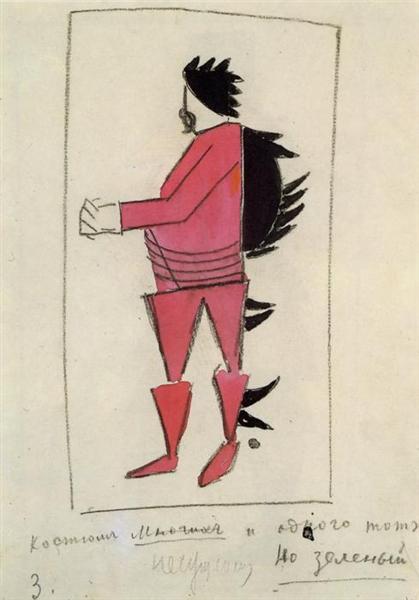Description
The art of Kazimir Malevich, central figure of the Supreme Movement, is known for its audacity and its ability to reinvent visual language on the threshold of the twentieth century. His work "Many and one" (1913) is an explicit testimony of his aesthetic and philosophical concerns at a time when he sought to free himself from the ties of realism and explore new abstract dimensions.
In the painting "Many and one", Malevich uses a technique that fuses elements of Cubism with its emerging suprematism. The composition is dominated by fragmentation and overlap of geometric shapes, mostly rectilinear, but also curves. These forms create a sense of movement and dynamism, aspects that Malevich valued highly in their search to express the absolute and the eternal through art.
The use of color in this work is particularly significant. Malevich uses a limited but vibrant palette, in which ocher, green, red and blue tones predominate. The contrast of these colors not only brings vitality to the composition, but also helps to differentiate and highlight the various forms that dialogue with each other within the pictorial space. This chromatic game is representative of its interest in the perception of color as an independent phenomenon, not only as a representation tool.
A crucial aspect of Malevich's work is the progressive dematerialization of the object. While in "many and one" certain allusions to the real world can still be discerned as sections that remind profiles of human figures or utensils, these elements are completely deconstructed and reorganized in abstract forms. This trend marks its transition to the pure suprematism, where all figurative reference would finally be abandoned in favor of pure geometry and color.
"Many and one" can also be interpreted as a reflection on multiplicity and unity, as its title suggests. The many different forms that make up the painting can be seen as individual entities that, however, make up an integrated and cohesive whole. This dialectic between the multiple and the one resonates with the metaphysical ideas that Malevich defended, where abstract art becomes a path to access a deeper and deepest reality.
By placing this work in the context of its time, it is interesting to note how it reflects the deep cultural and technological transformations of the early twentieth century. Malevich's experimentation with abstraction can be seen as an response to the fragmentation of modern experience, a search for an order and truth underlying in the midst of the growing complexity of the contemporary world.
In conclusion, "many and one" is not only an outstanding piece in Malevich's repertoire, but also a milestone in the development of abstract art. Through its innovative use of shapes and colors, the work invites us to reconsider our perception of space and order, proposing a vision in which the visible is intertwined with the conceptual, and the multiple merges into the one.
KUADROS ©, a famous paint on your wall.
Hand-made oil painting reproductions, with the quality of professional artists and the distinctive seal of KUADROS ©.
Art reproduction service with satisfaction guarantee. If you are not completely satisfied with the replica of your painting, we refund your money 100%.

